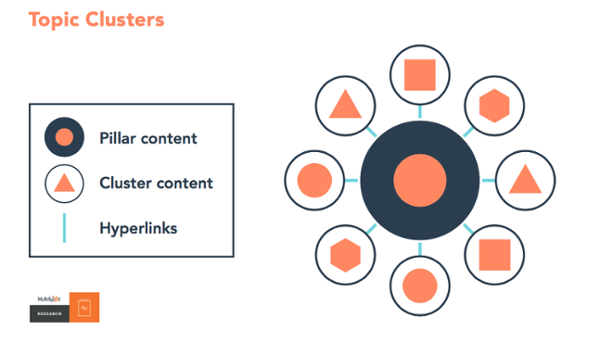When it comes to search engine optimization (SEO), the only constant is change. Right when you think you’ve figured out Google’s algorithms, the company does an about-face and changes the game – again.
Google first turned the game on its head with their 2013 Hummingbird update that allowed search algorithms to recognize phrases rather than individual keywords. Then they flipped it again in 2015 with their RankBrain update, which took machine learning to a new level with algorithms that could understand the context of searches, and therefore deliver much more appropriate content to the user.
The only way to keep up is to do your homework.
RELATED: HOW TO MAKE YOUR SITE SEARCHABLE
Enter Topic Clusters
That’s where topic clusters became uber important. Designed in response to these searches for context, they provide a format that corrals information on specific topics.
Whereas blog posts have specific keywords sprinkled throughout to increase their rankings, topic clusters group ideas for faster, better searches. The problem with the former approach was threefold: keywords often didn’t correlate to other same topic keywords within the same blog, multiple blogs with the same keywords could actually be competing for rank and ultimately, they made it hard for a user to find what he was looking for.
A topic cluster model is a group of interlinked articles and webpages that all relate to one central topic. With the interlinkedness, it’s easier for a user to navigate related pages and much easier for the search engine to find your content. In fact, one high ranking page in the cluster will pull additional linking pages’ ranks up. Organizing your content this way is not just a priority, it’s a necessity for building websites, landing pages and blogs today.
Related: Which Boosts My Site Rank: SEO Rich vs. Unique Content?
Build the Pillar Page
You guessed it. The pillar page is the one that “holds” the other pages together. Crafted as a wide ranging and long format resource page that contains a broad overview of specific topics, it’s the hub of a wheel that links out to the various blogs and articles that do deep dives into different subtopics. Ideally, it adheres to the best practices of SEO, with page titles, URLs and H1 tags that include the topic. It should also be positioned as a prominent page on your site that enjoys strong traffic numbers, especially because it will host so many inbound links. It’s prime real estate for converting your leads.
To create a pillar page, you’ll identify the main topics and subtopics that you want to cover. For each topic, you’ll want to prepare 6-8 subtopics that naturally grow from the main pillar page topic; these will be the spokes of your wheel. These clusters are usually website pages, blogs, URLs, landing pages, or links to relevant outside sites. To find good subtopics, think of questions that might be sparked by the pillar page topic. Then define each topic with a name that makes most sense. This way, your cluster will continue expanding upon the pillar page information.
Related: How to Drive Traffic to Your Website
Having more internal links increases your rankings. When your articles consistently feed into each other and cover the same topic, Google will better understand what your content is about. The more you reference a specific topic, the more Google will attribute an expert status to your content and set your rankings higher. If Google isn’t sure what your content or website is about, then it won’t rank you well.
With a pillar page in place, the rest of the content organizes itself and the entire topic cluster becomes easier for others to navigate. Google recognizes and rewards this since their goal is to be the most effective search engine; it increases rankings accordingly.
Putting it All Together
Let’s look at a quick example: We’re writing about “Starting a Franchise.” That’s our pillar topic. From there we’ll link to a variety of blogs and landing pages, with titles like, “Finding Funding for a Franchise,” “Hiring for Your Franchise” and “Marketing Your Franchise.” These will all link back to the pillar page as well. The cluster content will explore these more specific topics in more depth than the pillar page can. It will look something like this:
Ready to get writing? Need help with topic clusters and pillar pages? We’re here for you. Get in touch and we’ll have you speaking SEO like a pro.




